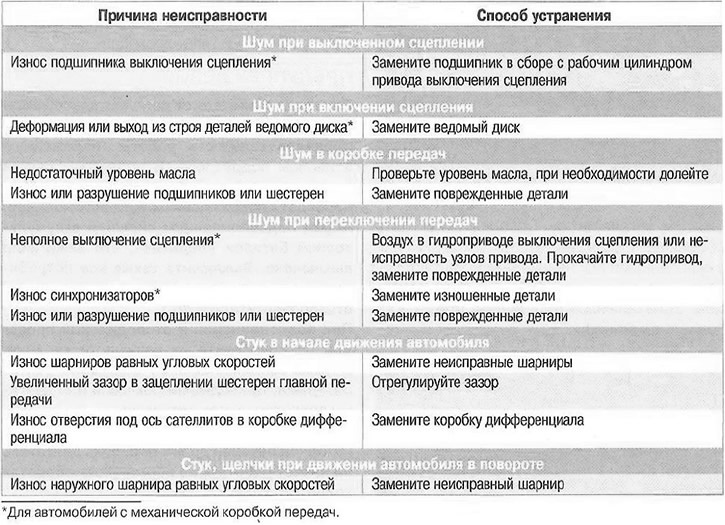Knocking in the engine
If it seemed to you that during the operation of the engine there were sounds that were not there before, immediately check whether everything is in order with the engine. Most often, a knock in the engine is associated with serious malfunctions, for diagnosing and eliminating which you will have to disassemble the engine in a service or garage. However, you can try to independently determine the cause of the knock in order to decide whether to go to a car service on your own or in tow.
Warning: If you have the slightest doubt about self-diagnosis, remove the tow rope. Serious repairs to a damaged engine will cost more than the services of a towing vehicle.
The knock of the main bearings is heard at the very bottom of the cylinder block - very dangerous; stop the engine immediately, you will have to go to a car service or garage in tow. A low-pitched knock that increases noticeably under load and with an increase in the crankshaft speed. Often its appearance is accompanied by a drop in oil pressure (The oil pressure warning light is almost permanently on).
The knock of connecting rod bearings is heard in the middle of the cylinder block - very dangerous; stop the engine immediately, you will have to go to a car service or garage in tow. The sound is rhythmic, ringing, metallic, medium tone. Significantly increases with increasing load and completely disappears when the spark plug is turned off.
The sound of piston pins is heard in the upper part of the cylinder block - dangerous; without loading the engine, you can drive to a car service or garage on your own. Rhythmic, high-pitched, with a sharp metallic tint, audible in all engine operating modes, intensifies with increasing engine load. Completely disappears when the spark plug is turned off.
The sound of worn pistons and cylinders is heard in the same part of the engine as the sound of piston pins - it is not dangerous; without heavily loading the engine, you can drive to a car service or garage on your own. A sound reminiscent of the clatter of pottery. It is especially well heard on a cold engine, as it warms up it decreases or disappears.
The knock of the valves is heard in the upper part of the engine in the area of \u200b\u200bthe head cover - it is not dangerous, you can drive to a car service or garage on your own. A metallic thump against the background of a general muffled noise. It is well audible at low and medium speeds of the crankshaft from the side of the cylinder head above the valve locations.
Knocking is dangerous, but usually corrected by replacing the knock sensor or filling with good quality fuel. Avoiding increased engine load, you can drive to a car service or garage on your own. Voiced metallic knocks that occur, as a rule, during acceleration of the car. The reason is the failure of the knock sensor, the use of low-octane fuel, engine overload with too early upshift, significant carbon formation in the combustion chambers. It is necessary to apply a special fuel additive to remove carbon deposits on valves and in combustion chambers.
Knocks in the suspension and transmission
If extraneous knocks appear in the suspension of a moving car, it is necessary to immediately establish their source, regardless of whether it is a constant knock or appears only when driving through bumps.
Warning: Malfunctions in the vehicle's suspension can lead to a serious accident!
Check the suspension according to the method described in sec. 7 «Chassis» (see «Checking the technical condition of the front suspension parts on the car»).
Helpful Hint: It is better to check the condition of the suspension on a car installed on a flyover, inspection ditch or lift, and if this is not possible, you can do this work on a free flat area, albeit with less convenience. In any case, you will need an assistant.
It is rather difficult to diagnose the health of transmission units by the noise they emit. If you are unable to pinpoint the source of the noise, contact a qualified technician.
Repair or replace failed transmission units.
Possible causes of knocks in the suspension and how to eliminate them

Possible knocks (noises) transmissions, their causes and solutions

Vibration and bumps in the steering wheel
The cause of knocks from below can be malfunctions of not only the suspension, but also the steering of the car.
Warning: The condition of the steering significantly affects not only the driving comfort, but also the driving safety.
The cause of knocks and vibrations on the steering wheel may be a faulty condition of the ball joints of the steering rods and the steering mechanism, the wheels of the car. Check up a steering according to a technique stated in subsection «Inspection and testing of the steering on the car».
Helpful Hints: A possible cause of vibration and bumps on the steering wheel when driving at speeds above 70-80 km/h may be an imbalance in the front wheels. Contact a car service or tire shop to check the balance of the front wheels.
If shock and vibration on the steering wheel appear at the moment you press the brake pedal, you need to replace the brake pads or replace the brake discs (see «Front wheel brakes»).
Possible causes of vibrations and shocks on the steering wheel and how to eliminate them

